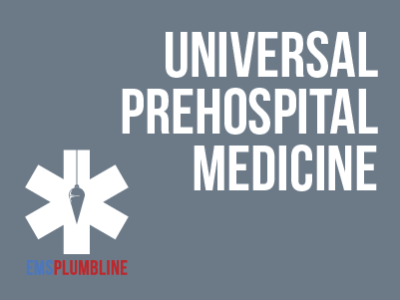 |
Constructing: Airway Essentials—Part 8 |
0.50 |
These eight Airway Essentials Lessons conclude with Dr. Christopher Galton's thoughts on what should be done after the ALS airway has been established. It is here that ideas are offered on what paramedics should read and learn more about to improve their practice. Grab a pencil and a notepad and get ready to graduate from the EMS Plumbline "Introduction to ALS" to the "Paramedicine" Division. Final Exam: This multiple choice exam is designed to test your knowledge of the material you just reviewed. You have two attempts to gain an 80% or higher on this exam. Please take your time and answer each question carefully. |
 |
Connecticut Sexual Harassment Prevention Training |
2.00 |
This 2 hour Connecticut Sexual Harassment Prevention Training is brought to you by the Connecticut Commission on Human Rights and Opportunities.
Thank you to the Connecticut Commission on Human Rights and Opportunities' for allowing us to use their materials from the Sexual Harassment Prevention Training course. |
 |
Introduction to Risk Management |
1.00 |
This an introductory course that introduces the firefighter to the concepts of risk management. The concepts introduced in this course are intended to create a healthy attitude regarding safety and begins a process of developing a safety-minded culture. The definitions of hazard and risk are defined and the concept of risk management is explained. This explanation of risk management is intended for firefighters who need a rapid and effective method for identifying and mitigating dangers on the fire ground. |
 |
Mental Health - Anxiety Overview |
1.00 |
This brief overview of the topic of anxiety disorders explores the assessment and treatment that EMS providers should be familiar with. Along with the intricate evaluations that EMS providers must obtain on the patients they are caring for there is the underlying issue of evaluating ourselves. This tour of the topic will certainly offer opportunities for EMS providers to assist responders and patients alike.
Exam Description Please read each question carefully. You will have two attempts to gain a 70% or higher on this exam. If you are not successful in two attempts you are welcome to take the course again to gain the certification. Best of luck! |
 |
Working with Minors |
2.00 |
This collection includes Reporting and Abuse Laws, Campus Policies, Developmental Differences and Establishing Boundaries. |
 |
Great Apes |
3.00 |
This collection of 3 courses explores the natural history and conservation of the great apes and covers a bit about primates and how the apes fit into this larger group of animals. |
 |
ALS Airway Response - Part One |
1.00 |
This conversation with Dr. Christopher Galton turns into a lesson that any paramedic (no matter what their background) will find beneficial in their attempt(s) to improve their Airway Skills. Dr. Galton, leads this discussion by bringing together his experiences in the pre-hospital arena, the emergency department, the ICU, the operating room, and beyond. Pull out a pen and paper and get ready to write down talking points that you will undoubtedly debate with fellow paramedics. You have two attempts to gain a 70% or higher on the exam. Take your time and good luck! |
 |
Preventing Violence at the Workplace - Retail |
0.50 |
This course addresses workplace violence, including its factors and types, and provides strategies for preventing it. |
 |
Trauma-Informed Practices |
1.00 |
This course contains an overview of trauma: what it is, how to manage it, and what it looks like for students; a list of trauma-informed practices; and ways to ensure that you are implementing data-driven trauma-informed practices.
Trauma-Informed Practices is just one out of two courses in our trauma series. Be sure to check out the other course, Trauma and Its Impact on Education. |
 |
Cultural Diversity in School Settings |
1.00 |
This course contains definitions of diversity, equity, and inclusion (DEI) and the role DEI plays in the school setting. Embracing diversity, equity, and inclusion benefits everyone within a K-12 institution: faculty, staff, students, and families.
Learners will reflect on the different elements of their own identity and how that impacts their perception of others. This course will also discuss the role of bias in the school setting. |











